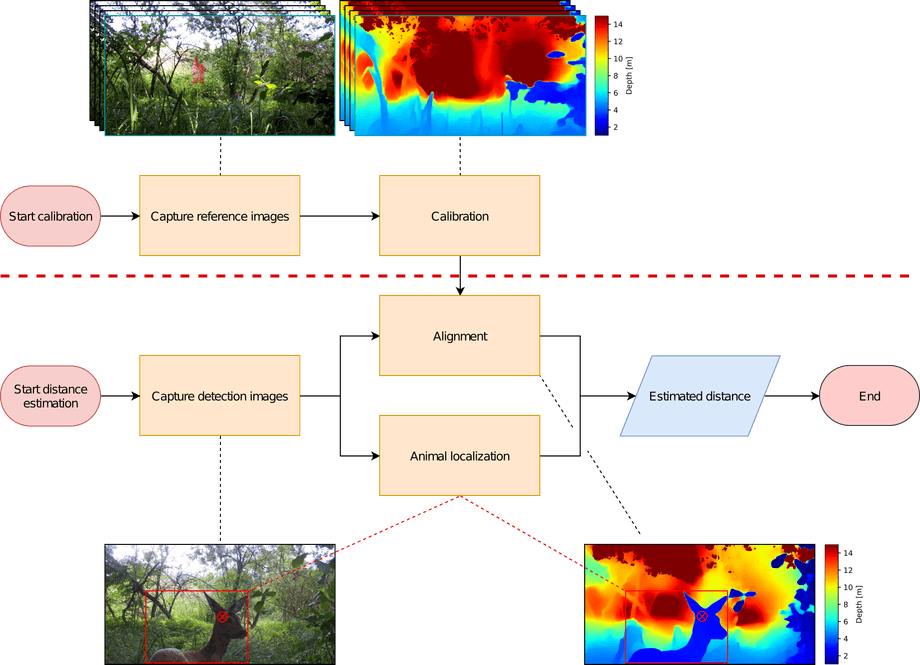Overcoming the Distance Estimation Bottleneck in Estimating Animal Abundance with Camera Traps
The biodiversity crisis is still accelerating, despite increasing efforts by the international community. Estimating animal abundance is of critical importance to assess, for example, the consequences of land-use change and invasive species on community composition, or the effectiveness of conservation interventions.
Various approaches have been developed to estimate abundance of unmarked animal populations. Whereas these approaches differ in methodological details, they all require the estimation of the effective area surveyed in front of a camera trap. Until now camera-to-animal distance measurements are derived by laborious, manual and subjective estimation methods. To overcome this distance estimation bottleneck, this study proposes an automatized pipeline utilizing monocular depth estimation and depth image calibration methods. We are able to reduce the manual effort required by a factor greater than 21.

Code and Graphical User Interface
We provide an updated implementation of our methodology using MegaDetector 5.0 together with a graphical user interface on GitHub. The previous version used MegaDetector 4.1 and is still provided here for archival purposes. To simplify the distribution of the original version, it is packaged in the Open Virtualization Format, which can, for example, be imported using VirtualBox. For the original version, please consult the installation manual and the example dataset.
Acknowledgments
This research has been funded in part by the Federal Ministry of Education and Research (www.bmbf.de) of the Federal Republic of Germany under grant number 01DK17048. We would like to thank the Helversen'sche Stiftung for providing permission and access to the FFH conservation area "Hintenteiche bei Biesenbrow" and are grateful for support of our work by Dorothea Dietrich, Dietmar Nill, Ulrich Stöcker and Thomas Volpers. We would also like to thank Dr. Martin Flade and Rüdiger Michels from the Biosphere Reserve Schorfheide-Chorin. We thank the participants of the user study. We thank Frank Schindler for proofreading the manuscript.
Cite
In plaintext:
Haucke, T., Kühl, H. S., Hoyer, J., & Steinhage, V. (2022). Overcoming the distance estimation bottleneck in estimating animal abundance with camera traps. Ecological Informatics, 68, 101536. https://doi.org/10.1016/j.ecoinf.2021.101536
In BibTeX:
@article{haucke2022overcoming,
title = {Overcoming the distance estimation bottleneck in estimating animal abundance with camera traps},
author = {Timm Haucke and Hjalmar S. Kühl and Jacqueline Hoyer and Volker Steinhage},
doi = {https://doi.org/10.1016/j.ecoinf.2021.101536},
journal = {Ecological Informatics},
volume = {68},
pages = {101536},
year = {2022},
issn = {1574-9541},
url = {https://www.sciencedirect.com/science/article/pii/S1574954121003277}
}